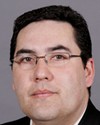You made a comment, which I agree with more than 100 percent, that the current methodologies and current data that you take and work with sometimes bury the real picture in different regions of the country—and even more deeply in different tribal councils, and even more deeply in different communities. So what you end up having after you take the highs and you take the lows is a below-average figure, and then you paint the picture of the conditions, because that's the way the data works. Politicians tend to take that and, unfortunately, may not use it in the best way, or take it too literally without understanding its depth.
A bigger issue that is related to the parliamentary secretary's question is not what you need, but what we can provide to the aboriginal communities to do their own research and development. Right now they do not get research and development dollars.
I'll give you an example. We did this education indicators report of our tribal council of 33 schools, who are almost 50% of the on-reserve population in Saskatchewan, and there was no money anywhere to do it, so we took money from health and from another program and another program to actually do what was important. We came up with some demographic pictures, but not until we got done did we get some funding for it. It's important at the end of the day, because then communities take ownership of their research suggesting what they need to do to come up with solutions for their own issues.
Another example is the Northern Inter-Tribal Health Authority, which established a surveillance unit in northern Saskatchewan that talked about TB rates and immunizations. Once the 50 or so communities there realized they had the lowest immunization rates for newborns, having that data in hand, they designed a response because they took ownership and responsibility. Now those northern first nations communities have the highest rates of immunization in the country, even higher than the province of Saskatchewan.
So it's not what we can provide, but that we provide the first nations, Métis, and Inuit communities the ability to come up with their own solutions once they have developed the data. Then as a data geek I'll take that data and do much more wonderful things with it and get much more accurate pictures.
So research and development funding is absolutely critical. Without that, you never get to see the best practices, because they're always buried so deep.





